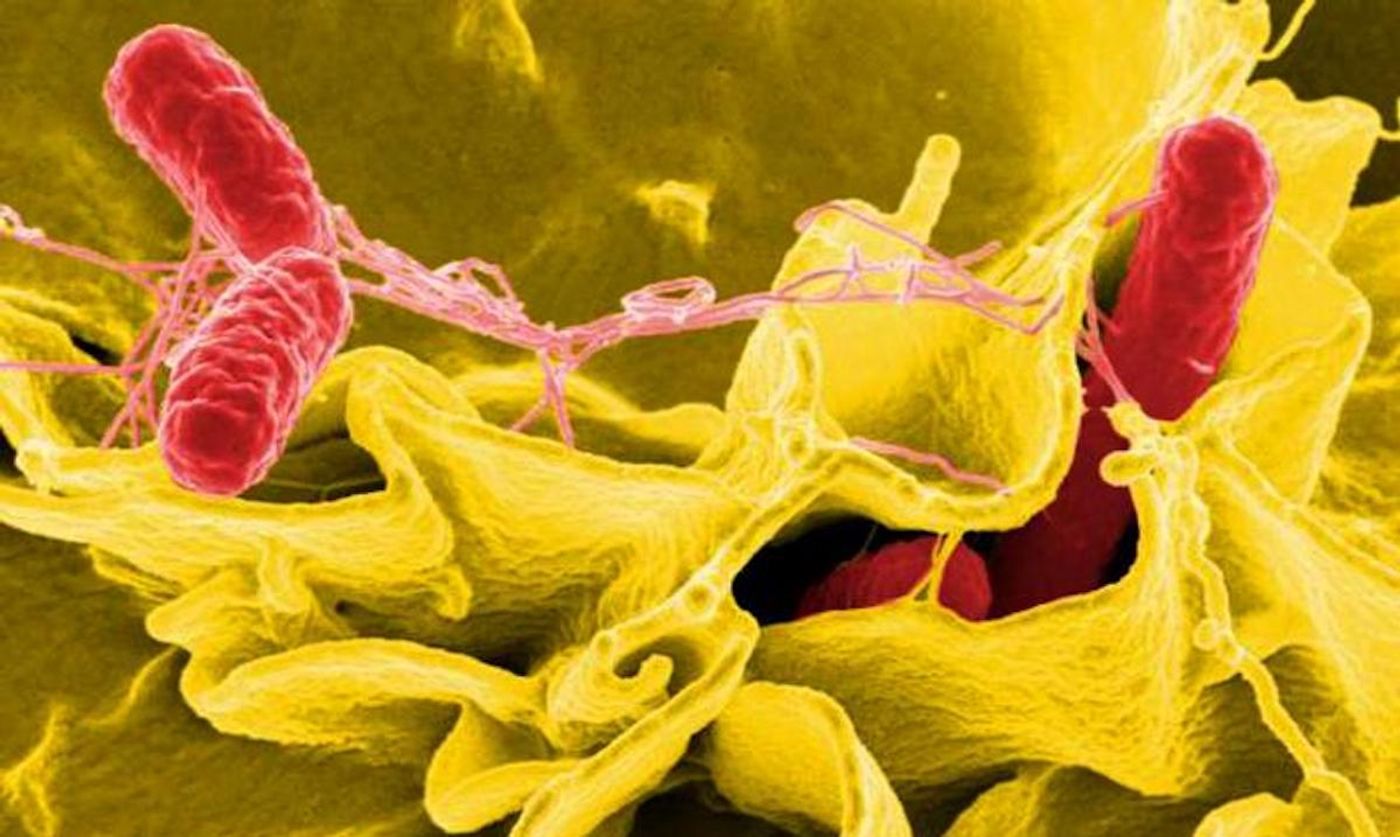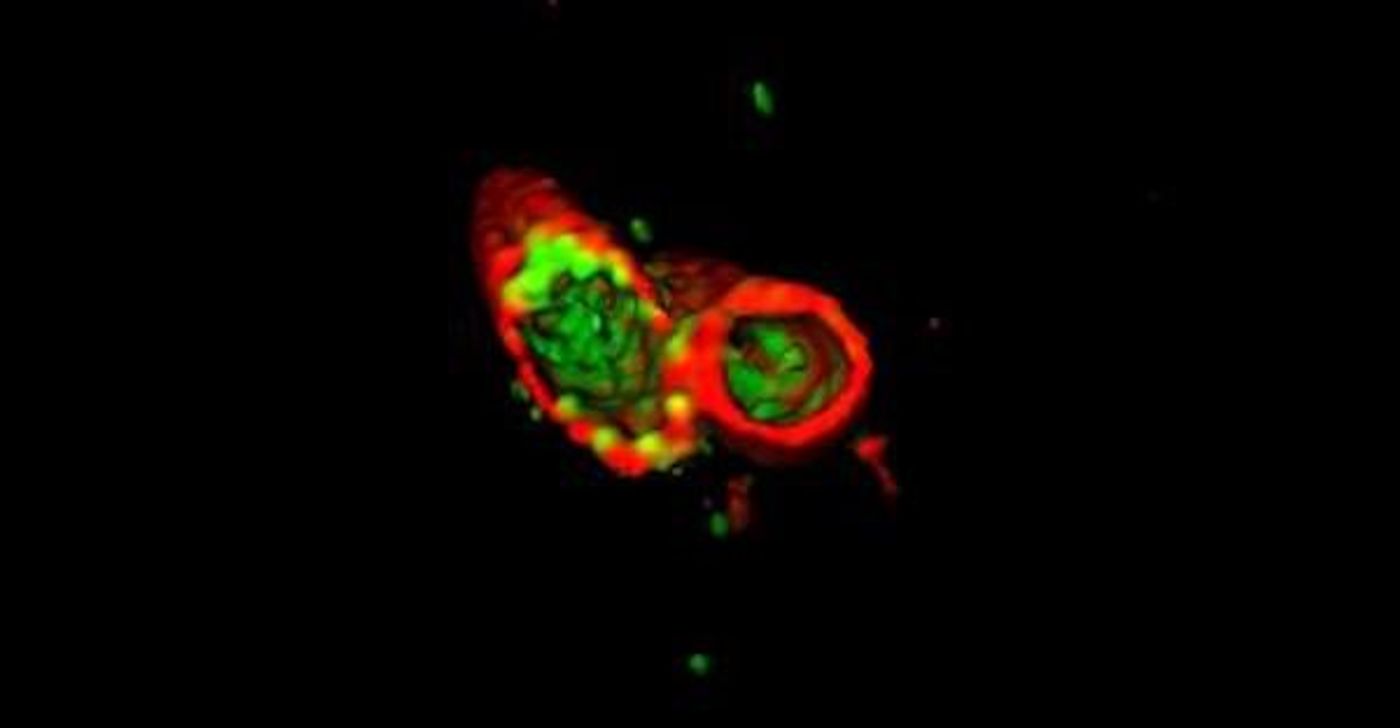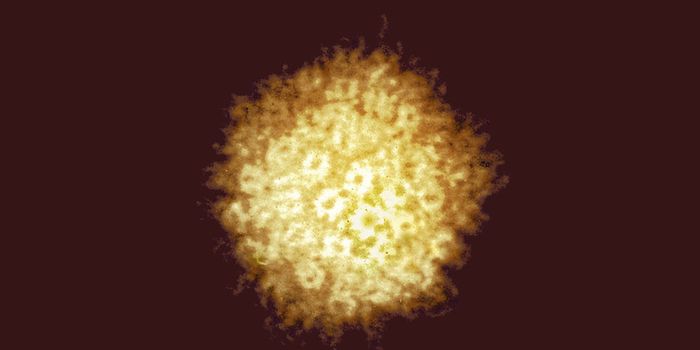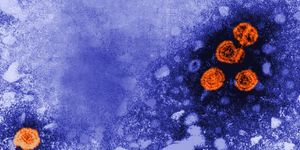Cells Have a Self-Defense Mechanism Against Bacteria
Scientists have identified a protein that can stop an infection in its tracks by simply dissolving a bacterial pathogen's cell membrane. This work indicates that there are natural detergents that cells can produce to defend themselves from pathogens. Bacterial membranes seem to be wiped out by a protein called APOL3, which acts like a killer cleanser. This may be the first time an intracellular protein with a protective, detergent-like action has been found. The work, which tested APOL3 on the membranes of Salmonella and other microbes, has been reported in Science.
When individual cells mount their own defense against an infection it's called cell-autonomous immunity. Cells are known to be able to attack the membranes of bacterial cells, and this work has identified a protective protein that's involved.
Research leader and Howard Hughes Medical Institute Investigator John MacMicking is hopeful that this work will improve infection treatments. “This is a case where humans make their own antibiotic in the form a protein that acts like a detergent,” said MacMicking, a Yale University immunologist. “We can learn from that.”
In this study, the researchers infected cells with Salmonella, a tough bacterium that has two cell membranes. Cytokines are proteins that send critical signals to cells; interferon gamma is a cytokine that can ramp up immune activity. This research found that interferon gamma keeps Salmonella from infecting human cells. They screened over 19,000 genes in the human cell to find the potentially protective proteins.
That effort revealed APOL3, which works with a molecule called GBP1, and maybe others too. Additional work suggested that GBP1 can damage the outer membrane of a bacterium so APOL3 can get through to penetrate the inner membrane.
Detergents or surfactants have both water-attracting and water-repelling parts; they are amphiphilic molecules. APOL3 is like that too, and this structure enables it to pull the fatty lipids in the bacterial membrane apart.
APOL3 must leave human cells unharmed, so this process is probably very selective, MacMicking said. The researchers determined that APOL3 will target lipids that bacteria prefer and ignore cholesterol, a component of eukaryotic cell membranes that's not usually found in bacterial cell walls.
The APOL3 protein is found in many types of cells and may be widely protective, noted the researchers. While this study won't be applied to therapeutic interventions yet, it could be useful as we search for new ways to eliminate bacterial infections. Ramping up cellular processes that include these types of defensive mechanisms could boost the natural immune response, MacMicking added.
Sources: Howard Hughes Medical Institute, Science










